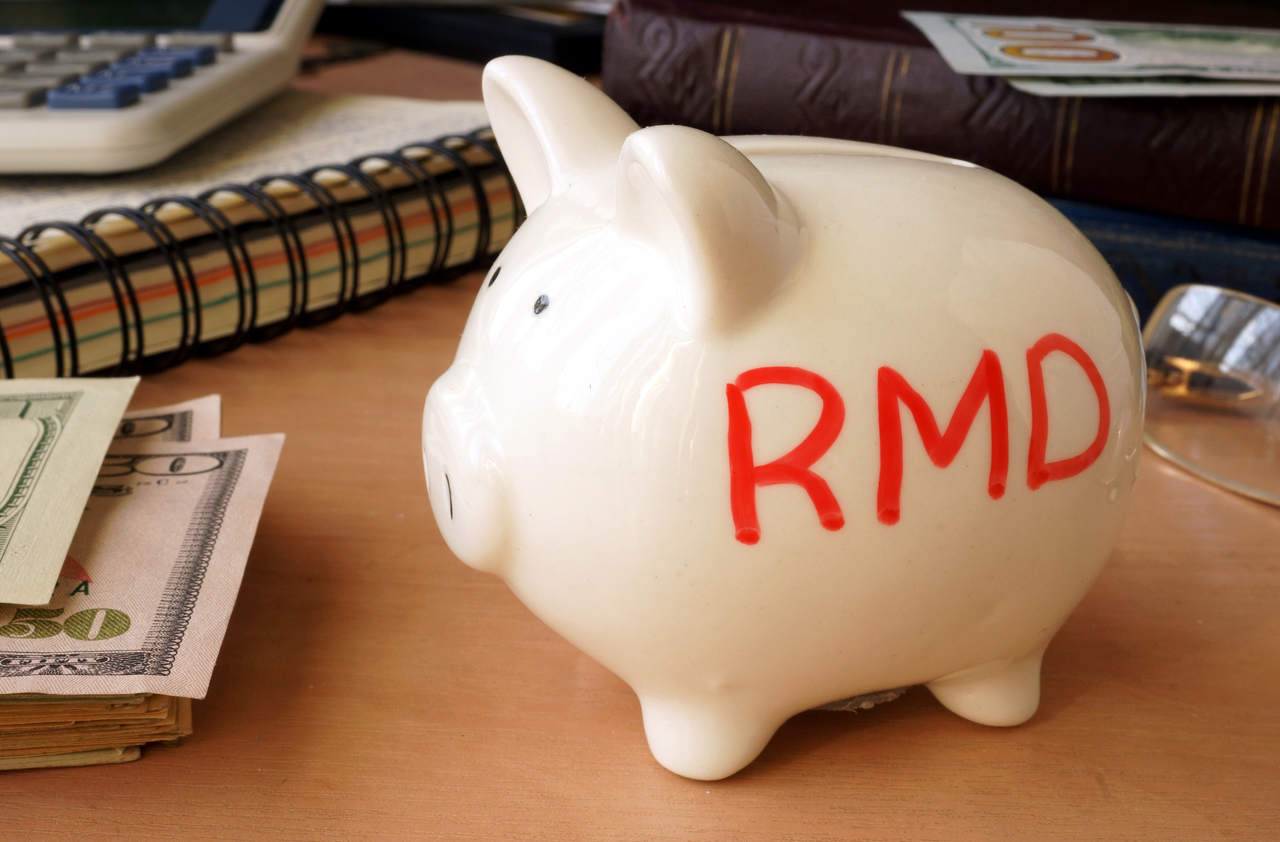Smart Retirement: Avoid the 5 Biggest IRA RMD Mistakes
If you have a traditional IRA or a 401(k), you will also have required minimum distributions one day. And if you make any of these common mistakes, you could also have some costly penalties, courtesy of the IRS.


Next time you check your 401(k) or IRA balance ask yourself this, “How much of this money is actually mine?” There’s a big chance that during your retirement a good chunk of that money is going to go to Uncle Sam. That’s because when you turn 70½ the IRS requires that you take a required minimum distribution (RMD) from your qualified retirement savings, such as your traditional IRA, 401(k) and 403(b). You’ll have to take that distribution every single year until the account is depleted or you pass away.
That’s right, the IRS wants their tax cut for the rest of your life, your spouse’s life and possibly your beneficiaries’ lives. If you don’t take your RMDs, the IRS will send you a love letter in the mail saying you owe big penalties. I’m going to share with you the five biggest mistakes to avoid when it comes to your RMDs, because even the simplest mistakes can cost you a lot of money.
Mistake #1: Not taking your RMD on time
The penalties for missing your RMD can be severe. To avoid a potential 50% penalty, you must take your first RMD from your IRA after you turn 70½. The only exception to taking an RMD is if you’re still working somewhere with a retirement plan you are actively participating in. Then you do not need to take an RMD for that particular plan, like a 401(k) or 403(b). However, you would still need to take an RMD from your personal IRA.
From just $107.88 $24.99 for Kiplinger Personal Finance
Become a smarter, better informed investor. Subscribe from just $107.88 $24.99, plus get up to 4 Special Issues

Sign up for Kiplinger’s Free Newsletters
Profit and prosper with the best of expert advice on investing, taxes, retirement, personal finance and more - straight to your e-mail.
Profit and prosper with the best of expert advice - straight to your e-mail.
The deadline to take your RMD is by Dec. 31. However, you have some cushion time to take your very first RMD. The last date allowed for the first withdrawal is April 1 of the year after the calendar year during which you turned 70½. If you turn 70 between Jan. 1 and June 30 in 2018, then your first RMD would have to be taken no later than April 1, 2019. Your second RMD would come due by Dec. 31, 2019, essentially doubling your payment that year, and causing a potentially higher tax bill. To avoid that, most people don’t put off their first RMD, and instead they take it within the same year they reach 70½. What if you celebrate your 70th birthday from July 1 through Dec. 31 in 2018? Well, then you can wait until April 1, 2020, to take your first RMD. Your second would be due by Dec. 31, 2020.
It’s vital to take your RMD on time, so don’t wait until the last minute. Have a distribution plan in place to avoid this costly mistake.
Mistake #2: Calculating the RMD amount wrong
To calculate your RMD you need to know two things: your prior year-end balance and your life expectancy factor. Getting your prior year-end balance is usually pretty simple. In most cases, you can look at your December or fourth-quarter IRA statement and use the ending balance. Then you use your age to look up your life expectancy factor on the Uniform Lifetime Table provided by the IRS and divide your prior year-end balance by that factor.
For example, suppose a 75-year-old is calculating their 2018 RMD. The first thing they’ll need is the prior year-end balance of their IRA, and secondly they’ll look up the age 75 factor in the Uniform Lifetime Table. Let’s say the Dec. 31, 2017, IRA balance was $200,000 and for a 75-year-old the factor is 22.9. Divide $200,000 by 22.9 and the RMD amount comes out to $8,733.63. This is done each successive year.
If you’d like to double-check your calculation, you could always try an RMD calculator, which can do the math for you.
One final tip: I recommend taking a little extra and giving yourself some cushion in case you underestimate the RMD amount. Remember, you could pay a penalty of 50% on any shortfall.
Mistake #3: Taking your RMD from your spouse’s IRA
A common RMD mistake is aggregating RMDs between spouses. For instance, suppose you and your spouse file a joint tax return. You have an RMD for your IRA of $4,000 and your spouse has an RMD for their IRA of $2,000. To make things easy, you decide to take $6,000 out of your IRA. After all, they are both IRAs and since you file jointly, the income will show up on the same return, right?
While that may be true, it doesn’t matter. Retirement accounts are individual accounts. There is no such thing as a joint IRA or joint 401(k), so you must always take your own RMDs from your own accounts. Taking your RMD from your spouse’s IRA will not satisfy your RMD and vice versa. Doing this will cause several problems. The IRS will think that you missed your RMD and impose up to a 50% penalty on that RMD amount. Since the distribution is made from your spouse’s IRA, it will be subject to income tax. If your spouse must also take an RMD, this will cause your spouse to take more out of the IRA than necessary, which means potentially paying more taxes. This can cause problems, especially if there’s a big age gap between you and your spouse, because RMDs are considered as income on your tax return, which effects the taxation of your Social Security and Medicare Premiums. So, remember that the RMD is calculated based on your age and your personal qualified accounts, such as your IRA, 401(k) or SEP IRA.
Mistake #4: Taking your RMD from the wrong type of account
There are different types of retirement accounts — including IRAs, 401(k)s and 403(b)s) — and trying to mix and match RMDs from two different types of accounts can cost you in IRS penalties. What tends to trip people up is that you can combine, or aggregate, RMDs from some types of accounts, but not others.
You can aggregate RMDs from all of your IRAs (including SEP and SIMPLE IRAs), meaning that you can calculate your RMDs separately, then add them together and withdraw the total from any one or a group of IRAs. If you have multiple 403(b) accounts, you can do the same thing with them. Those are the only types of accounts that can be aggregated. That means if you have several 401(k)s, you would have to calculate RMDs for each one and withdraw the correct amount from each plan separately.
For example, suppose you have a 401(k) and an IRA, and after calculating your RMDs from each account, they come out to be $4,000 and $3,000 respectively, for a total of $7,000. Now imagine your IRA is earning a higher rate of return than your 401(k). You might be tempted to just pull out $7,000 from your 401(k), leave your IRA alone, and call it a day. After all, what’s the difference? They’re both retirement accounts and whether you take $7,000 from just your 401(k) or $4,000 from your 401(k) and $3,000 from your IRA, it’s the same impact on your tax return.
That’s pretty logical thinking, but the tax rules are anything but logical and they specifically prohibit you from doing that. An RMD for one type of retirement account, like an IRA, can never be taken from another type of retirement account, like a 401(k). If you make this mistake, you’d have to take another distribution from the correct account to make up for it — and if you don’t discover your mistake in time to fix it before the Dec. 31 deadline, you could owe the dreaded 50% IRS penalty. On top of that, you’ll still have to pay taxes on the distribution from the wrong account. Many 401(k) plans will not allow you to roll your distribution back into the 401(k) if you’re no longer employed for that company.
Tip: When you retire, consider rolling your 401(k) into an IRA. The IRA will provide you with many more investment options, the flexibility to move and allocate assets among other IRA investment accounts, greater flexibility for distributing assets and more favorable taxation options for your beneficiaries when they inherit your IRA.
Mistake #5: Forgetting to take your RMD
Forgetting to take your RMD is the costliest mistake you can make. The penalty for not taking an RMD is up to 50% of the RMD amount. That can be very costly on top of the taxes you already have to pay. Although this should never happen, sometimes mistakes are made. It’s just a fact of life. Maybe a family member was sick and you got preoccupied, or maybe you were away on your dream vacation and it simply slipped your mind.
Whatever the reason, if you forgot to take an RMD or you’ve otherwise made a mistake, the one thing you should not do is pretend that it never happened. In most cases if you do that, like I said earlier, the IRS can come back and assess the 50% penalty, along with a host of other penalties and interest, indefinitely.
The good news is there are ways to fix this mistake, and your CPA or financial professional can help you in that process. My advice is don’t miss your RMD. If you do, get it fixed … and don’t ever miss it again.
As you’ve probably realized, IRA planning is a lot more complicated than most people realize. Let’s face it, deciding what strategies are best for your IRA crosses into just about every area of planning; from tax planning, to investment planning, to estate planning. A smart retirement starts with diligent preparation, because time spent planning gives you the knowledge you need to make smart decisions and avoid costly financial mistakes during your retirement.
Profit and prosper with the best of Kiplinger's advice on investing, taxes, retirement, personal finance and much more. Delivered daily. Enter your email in the box and click Sign Me Up.

Gregory H. Oray is the president and investment adviser representative of Oray King Wealth Advisors. With a bachelor's degree in business and a master's degree in finance (MSF) from Walsh College School of Business, Greg entered the financial services industry over 10 years ago to dedicate his time and energy toward assisting individuals and their families with lasting financial guidance.
-
 Nasdaq Sinks 418 Points as Tech Chills: Stock Market Today
Nasdaq Sinks 418 Points as Tech Chills: Stock Market TodayInvestors, traders and speculators are growing cooler to the AI revolution as winter approaches.
-
 23 Last-Minute Gifts That Still Arrive Before Christmas
23 Last-Minute Gifts That Still Arrive Before ChristmasScrambling to cross those last few names off your list? Here are 23 last-minute gifts that you can still get in time for Christmas.
-
 The Rule of Compounding: Why Time Is an Investor's Best Friend
The Rule of Compounding: Why Time Is an Investor's Best FriendDescribed as both a "miracle" and a "wonder," compound interest is simply a function of time.
-
 If You're a U.S. Retiree Living in Portugal, Your Tax Plan Needs a Post-NHR Strategy ASAP
If You're a U.S. Retiree Living in Portugal, Your Tax Plan Needs a Post-NHR Strategy ASAPWhen your 10-year Non-Habitual Resident tax break ends, you could see your tax rate soar. Take steps to plan for this change well before the NHR window closes.
-
 Could Target-Date Funds With Built-In Income Guarantees Be the Next Evolution in Retirement Planning?
Could Target-Date Funds With Built-In Income Guarantees Be the Next Evolution in Retirement Planning?With target-date funds falling short on income certainty, retirement plans should integrate guaranteed income solutions. Here is what participants can do.
-
 Your Year-End Tax and Estate Planning Review Just Got Urgent
Your Year-End Tax and Estate Planning Review Just Got UrgentChanging tax rules and falling interest rates mean financial planning is more important than ever as 2025 ends. There's still time to make these five key moves.
-
 Past Performance Is Not Indicative of Your Financial Adviser's Expertise
Past Performance Is Not Indicative of Your Financial Adviser's ExpertiseMany people find a financial adviser by searching online or asking for referrals from friends or family. This can actually end up costing you big-time.
-
 I'm a Financial Planner: If You're Not Doing Roth Conversions, You Need to Read This
I'm a Financial Planner: If You're Not Doing Roth Conversions, You Need to Read ThisRoth conversions and other Roth strategies can be complex, but don't dismiss these tax planning tools outright. They could really work for you and your heirs.
-
 Could Traditional Retirement Expectations Be Killing Us? A Retirement Psychologist Makes the Case
Could Traditional Retirement Expectations Be Killing Us? A Retirement Psychologist Makes the CaseA retirement psychologist makes the case: A fulfilling retirement begins with a blueprint for living, rather than simply the accumulation of a large nest egg.
-
 I'm a Financial Adviser: This Is How You Can Adapt to Social Security Uncertainty
I'm a Financial Adviser: This Is How You Can Adapt to Social Security UncertaintyRather than letting the unknowns make you anxious, focus on building a flexible income strategy that can adapt to possible future Social Security changes.
-
 I'm a Financial Planner for Millionaires: Here's How to Give Your Kids Cash Gifts Without Triggering IRS Paperwork
I'm a Financial Planner for Millionaires: Here's How to Give Your Kids Cash Gifts Without Triggering IRS PaperworkMost people can gift large sums without paying tax or filing a return, especially by structuring gifts across two tax years or splitting gifts with a spouse.